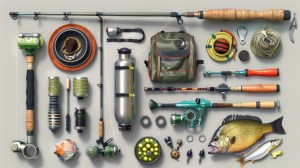Drills, Saws, and Sanders Explained: Which Tool Is Right for You?
If you’re venturing into the world of DIY projects or woodworking, the sheer number of tools available can be overwhelming. Among the most essential tools are drills, saws, and sanders. But which one should you buy first? In this article, we will break down each tool’s function, uses, and when to invest in them so you can make an informed decision for your toolkit.
Understanding Drills
A drill is a versatile tool designed primarily for making holes in various materials such as wood, metal, or plastic. It can also be used with different attachments to drive screws. When choosing a drill, consider whether you want a corded or cordless option; cordless drills offer mobility while corded drills tend to provide more power for heavy-duty jobs. If you’re just starting out and need something that’s easy to use for basic tasks like hanging shelves or assembling furniture, a cordless drill is an excellent choice.

Exploring Saws
Saws come in various types including hand saws, jigsaws, circular saws, and miter saws. Each type serves different purposes depending on what materials you are cutting and the precision required. For beginners focusing on home improvement projects or crafting furniture from scratch, a jigsaw is often recommended due to its versatility in cutting curves and straight lines in wood. On the other hand, if you’re planning larger projects that involve framing walls or cutting sheets of plywood frequently, investing in a circular saw might be more beneficial.
The Role of Sanders
Sanders are designed to smooth surfaces by removing material through abrasion using sandpaper attached to either an electric sander or manually operated ones like sanding blocks. An orbital sander is ideal for general use because it’s effective at finishing surfaces without leaving swirl marks; perfect for preparing wood before painting or staining. If your projects involve working with intricate details or fine finishes on smaller items like furniture legs or crafts pieces then consider getting a detail sander.
Which Tool Should You Buy First?
When deciding which tool to buy first among drills, saws, and sanders depends largely on your initial project needs. If your primary goal is assembly work—like putting together furniture—then start with a drill. However if you see yourself doing more renovation work requiring cutting materials before assembly then opt for a saw first. Lastly if finishing touches are what you’ll focus on early own (such as refinishing old furniture), then purchase a sander first.
Budget Considerations
Your budget will also play an important role in deciding which tool to purchase initially. Many quality options exist across all price ranges; however investing slightly more into reliable brands often leads to better performance and longevity over time—saving money down the road through fewer replacements. Be sure not only check pricing but also read reviews regarding durability and ease-of-use before finalizing any purchases.
In conclusion when it comes down to choosing between drills,saws,and sanders prioritize based on upcoming projects while considering budget constraints too . By understanding each tool’s capabilities ,you’ll set yourself up well equipped as tackle new DIY adventures.
This text was generated using a large language model, and select text has been reviewed and moderated for purposes such as readability.











